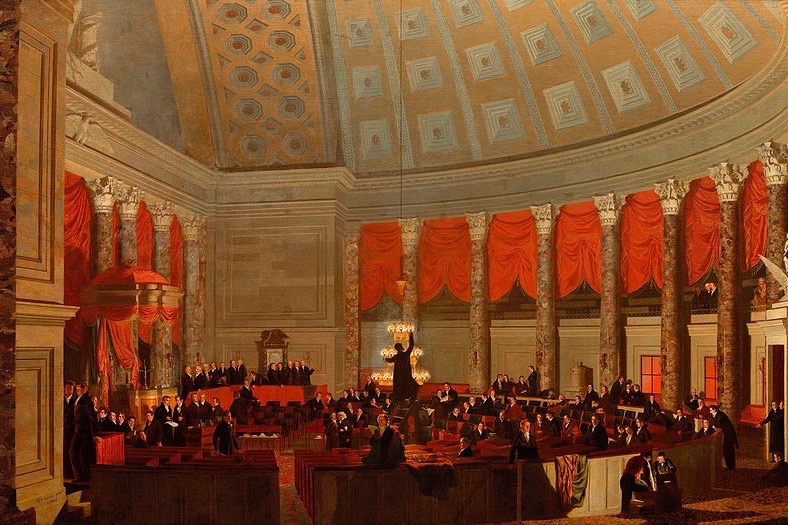Table Of Content

Thus, with its potential to frustrate presidential appointments, the Senate is more powerful than the House. Advocates for shrinking the size of the House of Representatives often argue that the quality of legislating improves because House members would get to know each other on a more personal level. They also cite the cost of paying for salaries, benefits, and travel for not only the lawmakers but their staffs. Another argument for increasing the size of the House is that is would diminish the influence of lobbyists.
"We have not been forgotten": Ukrainian troops describe morale boost from US House vote
How many house seats are up for election in 2024? These are the U.S. House races to watch. - USA TODAY
How many house seats are up for election in 2024? These are the U.S. House races to watch..
Posted: Fri, 25 Aug 2023 07:00:00 GMT [source]
The House has 435 members, the number representing each state is determined by population. The approval of the Senate and the House of Representatives is required for a bill to become law. Both Houses must pass the same version of the bill; if there are differences, they may be resolved by a conference committee, which includes members of both bodies. For the stages through which bills pass in the Senate, see Act of Congress.
h Congress
The number of representatives each state gets in the House of Representatives is based on population. That process, known as reapportionment, occurs every 10 years after the decennial population count conducted by the U.S. Senate, which consists of two members from each state, the geographic makeup of the House is determined by the population of each state. Constitution comes in Article I, Section 2, which guarantees each state, territory or district at least one representative. Some Republicans also angrily objected to their counterparts waving Ukrainian flags during the vote. Rep. Kat Cammack, a Florida Republican, said on X she was “infuriated” by the display and was working on legislation to prohibit the flags of foreign nations on the House floor.
House approves debt ceiling deal. Here's how your representative voted. - The Washington Post
House approves debt ceiling deal. Here's how your representative voted..
Posted: Wed, 31 May 2023 07:00:00 GMT [source]
Immigration Hard-Liner Files Reveal 40-Year Bid Behind Trump's Census Obsession
GOP Reps. Marjorie Taylor Greene and Thomas Massie railed on House Speaker Mike Johnson and his handling of the foreign aid bills, despite deciding not to move to oust the speaker Saturday. Read more about the House's passage of the foreign aid package below. “This package will deliver critical support to Israel and Ukraine; provide desperately needed humanitarian aid to Gaza, Sudan, Haiti and other locations impacted by conflicts and natural disasters around the world; and bolster security and stability in the Indo-Pacific. The Senate is set to begin considering the House-passed bill on Tuesday, with some preliminary votes that afternoon.
After the Democratic caucus chair is the campaign committee chair (Democratic Congressional Campaign Committee), then the co-chairs of the Steering Committee. For the Republicans it is the chair of the House Republican Policy Committee, followed by the campaign committee chairman (styled as the National Republican Congressional Committee). After the whips, the next ranking official in the House party's leadership is the party conference chair (styled as the Republican conference chair and Democratic caucus chair). House were held on November 3, 2020, and coincide with the 2020 presidential election. Special elections will be held during the 118th Congress to replace members of Congress who leave office for any reason.
The policy, which would lengthen the time frame for a sale from an earlier House bill, has Senate buy-in along with Biden’s support, putting TikTok closer than ever to being banned in the U.S. "At this critical inflection point, they came together to answer history’s call, passing urgently-needed national security legislation that I have fought for months to secure," he said. Several swing-district House Republicans praised Speaker Mike Johnson for pushing forward with the foreign aid bills and attacked his detractors.
House Floor Proceedings
This split is similar to the previous Congress, when 83% of non-White lawmakers were Democrats and 17% were Republicans. Still, Anderson, the census historian, says she's concerned about how representative the House actually is at this unchanging size. A century ago, there was one member for about every 200,000 people, and today, there's one for about every 700,000. "The thing that really caused the apportionment to get hung up over and over again throughout the 1920s was the insistence of a set of leaders that the House of Representatives could no longer grow any larger," Bouk says.
In GOP Contest, Trump Supporters Stand Out for Dislike of Compromise
Presently, the District of Columbia and the five inhabited U.S. territories each elect a delegate. A seventh delegate, representing the Cherokee Nation, has been formally proposed but has not yet been seated.[30] An eighth delegate, representing the Choctaw Nation is guaranteed by treaty but has not yet been proposed. Additionally, some territories may choose to also elect shadow representatives, though these are not official members of the House and are separate individuals from their official delegates. In most states, major party candidates for each district are nominated in partisan primary elections, typically held in spring to late summer. Exceptions can result in so-called floor fights—convention votes by delegates, with outcomes that can be hard to predict.
U.S. Congressional Districts

That line of reasoning assumes that lawmakers would be more closely connected to their constituents and therefore less likely to listen to special interests. The Constitution also states that there can be no more than one representative in the House for every 30,000 citizens. So, instead, Congress passed the Permanent Apportionment Act of 1929 and sealed the number of House members at the level established after the 1910 census, 435.
The United States Congress is the bicameral legislature of the United States of America's federal government. It consists of two houses, the Senate and the House of Representatives, with members chosen through direct election. In fact, there has been discussion over the decades about expanding the House, which would require Congress to pass a new law.
Elected representatives serve a two-year term, with no term limit. From 1910 to 1975 committee and subcommittee chairmanship was determined purely by seniority; members of Congress sometimes had to wait 30 years to get one, but their chairship was independent of party leadership. The rules were changed in 1975 to permit party caucuses to elect chairs, shifting power upward to the party leaders. In 1995, Republicans under Newt Gingrich set a limit of three two-year terms for committee chairs. The chairman's powers are extensive; he controls the committee/subcommittee agenda, and may prevent the committee from dealing with a bill. The senior member of the minority party is known as the Ranking Member.






